
More about chromatography
dSPE (QuEChERS)
Resprep™ QuEChERS Products
QuEChERS Tubes For Extraction and Clean-Up of Pesticide Residues From Food Products
- Fast, simple sample extraction and cleanup using dSPE.
- Fourfold increases in sample throughput.
- Fourfold decreases in material cost.
- Convenient, ready to use centrifuge tubes with ultra pure, preweighed adsorbent mixes.
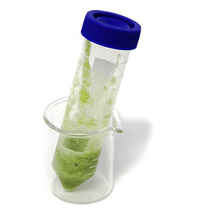 Quick, Easy, Cheap, Effective, Rugged, and Safe, the QuEChERS ("catchers") method is based on work done and published by the US Department of Agriculture Eastern Regional Research Center in Wyndmoor, PA.(1) Researchers there were looking for a simple, effective, and inexpensive way to extract and clean pesticide residues from the many varied sample matrices with which they routinely worked. They had been using the Modified Luke Extraction Method, which is highly effective and rugged, but is both labor and glassware intensive, leading to a relatively high cost per sample. Solid phase extraction also had been effective, but the complex matrices the investigators were dealing with required multiple individual cartridges and packings to remove the many classes of interferences, adding costs and complexity to the process. A new method would have to remove sugars, lipids, organic acids, sterols, proteins, pigments and excess water, any of which often are present, but still be easy to use and inexpensive.
Quick, Easy, Cheap, Effective, Rugged, and Safe, the QuEChERS ("catchers") method is based on work done and published by the US Department of Agriculture Eastern Regional Research Center in Wyndmoor, PA.(1) Researchers there were looking for a simple, effective, and inexpensive way to extract and clean pesticide residues from the many varied sample matrices with which they routinely worked. They had been using the Modified Luke Extraction Method, which is highly effective and rugged, but is both labor and glassware intensive, leading to a relatively high cost per sample. Solid phase extraction also had been effective, but the complex matrices the investigators were dealing with required multiple individual cartridges and packings to remove the many classes of interferences, adding costs and complexity to the process. A new method would have to remove sugars, lipids, organic acids, sterols, proteins, pigments and excess water, any of which often are present, but still be easy to use and inexpensive.
The researchers developed a simple two-step procedure. First, the homogenized samples are extracted and partitioned, using an organic solvent and salt solution. Then, the supernatant is further extracted and cleaned, using a dispersive SPE technique. Multiple adsorbents are placed in a centrifuge tube, along with the 1mL of organic solvent and the extracted residues partitioned from step 1. The contents are thoroughly mixed, then centrifuged, producing a clean extract ready for a variety of GC or HPLC analytical techniques.(2) Validation and proficiency data for the QuEChERS method are available for a wide variety of pesticides in several common food matrices at www.quechers.com.
Using the dispersive SPE approach, the quantity and type of adsorbents, as well as the pH and polarity of the solvent, can be easily adjusted for differing matrix interferences and "difficult" analytes. Results from this approach have been verified and modified at several USDA and Food and Drug Administration labs, and the method now is widely accepted for many types of pesticide residue samples.
Restek products make this approach even simpler. The centrifuge tube format, available in 2mL and 15mL sizes, contains magnesium sulfate (to partition water from organic solvent) and PSA* adsorbent (to remove sugars and fatty acids), with or without graphitized carbon (to remove pigments and sterols) or C18 packing (to remove nonpolar interferences). Custom products are available by quote request. If you are frustrated by the time and cost involved with your current approach to pesticide sample cleanup, we suggest you try this simple and economical new method.
We have products compliant with AOAC, Multi-miniresidue and Draft European methods.
Inforamtion about products is available here.
References:
- Anastassiades, M., S.J. Lehotay, D. Stajnbaher, F.J. Schenck, Fast and Easy Multiresidue Method Employing Acetonitrile Extraction/Partitioning and "Dispersive Solid-Phase Extraction" for the Determination of Pesticide Residues in Produce, J AOAC International, 2003, vol 86 no 22, pp 412-431.
- Schenck, F.J., SPE Cleanup and the Analysis of PPB Levels of Pesticides in Fruits and Vegetables. Florida Pesticide Residue Workshop, 2002
Leak Free SilTite metal ferrules for GC & GC/MS
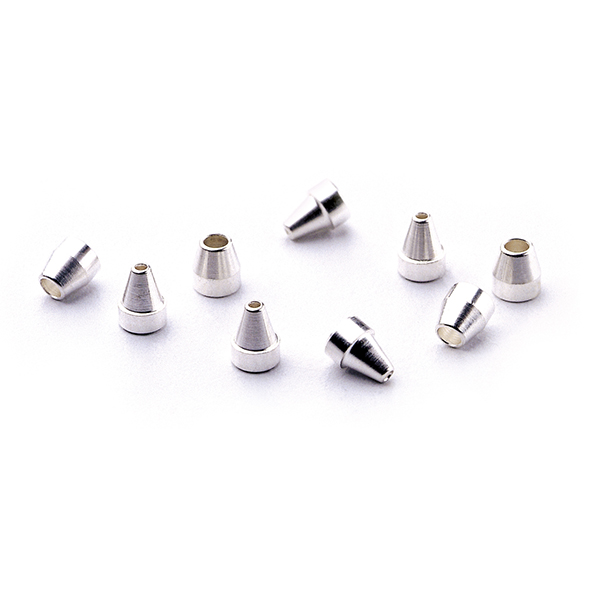 SilTite ferrules are a unique metal ferrule specifically designed for connecting fused silica GC columns and tubing to mass spectrometer interfaces and injectors. Once fitted, SilTite ferrules provide a continuous leak free connection without the need to re-tighten the nut after a few temperature cycles. SilTite ferrules make Graphite/Vespel® ferrules obsolete for use in GC-MS connections. Their performance and cost effectiveness also makes them ideal for connecting GC columns to injectors and atmospheric detectors.
SilTite ferrules are a unique metal ferrule specifically designed for connecting fused silica GC columns and tubing to mass spectrometer interfaces and injectors. Once fitted, SilTite ferrules provide a continuous leak free connection without the need to re-tighten the nut after a few temperature cycles. SilTite ferrules make Graphite/Vespel® ferrules obsolete for use in GC-MS connections. Their performance and cost effectiveness also makes them ideal for connecting GC columns to injectors and atmospheric detectors.
Why choose SilTite ferrules?
- Eliminates leaks (See figures below)
- Never needs re-tightening, even after temperature cycling
- Ferrule remains permanently fixed to the column but does not adhere to the SilTite nut
- No contamination from Vespel or graphite materials - 100% metal
- Ideal for high pressure applications
- Also available for injector interfaces
- >500°C maximum temperature
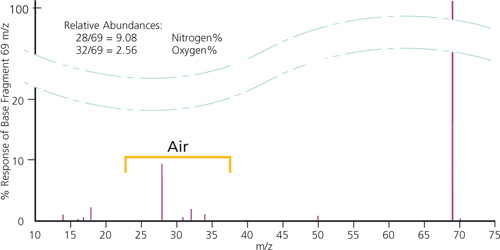
Figure 1. MS trace using a graphite Vespel ferrule after 5 temperature cycles.
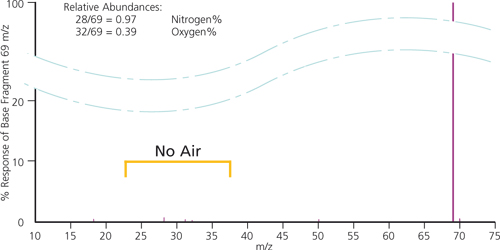
Figure 2. MS trace using a SilTite ferrule after 5 temperature cycles. (Using an MS, no leaks can be detected, even after 400 temperature cycles between 70ºC and 400ºC).
Agilent S/SL inlet seal improvment
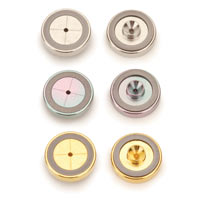 Washerless, Leak-Tight Seal for Agilent GCs ensures better tightness and easier handling than original part.
Washerless, Leak-Tight Seal for Agilent GCs ensures better tightness and easier handling than original part.
- Prevents oxygen from permeating the carrier gas, increasing column lifetime.
- Vespel® ring in top surface reduces operator variability by requiring minimal torque to seal.
- Vespel® ring in bottom surface simplifies installation—eliminates the washer.
In Agilent split/splitless injection ports, it can be difficult to make and maintain a good seal with a conventional metal inlet disk. The metal-to-metal seal dictates that you apply considerable torque to the reducing nut, and, based on our testing, this does not ensure a leak-tight seal. Over the course of oven temperature cycling, metal seals are prone to leaks, which ultimately can degrade the capillary column and cause other analytical difficulties.
Agilent and Restek seal tightness comparison
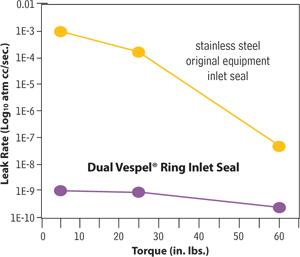
Patented Dual Vespel® Ring Inlet Seal (Restek) greatly improves injection port performance—it stays sealed, even after repeated temperature cycles, without retightening the reducing nut| This seal features two soft Vespel® rings, one embedded in its top surface and the other embedded in its bottom surface. These rings eliminate the need for a washer, and ensure very little torque is needed to make a leak-tight seal. The rings will not harm the critical seal in the injector body, or any other surface, and are outside the sample flow path. Tests using a high sensitivity helium leak detector show Dual Vespel® Ring Inlet Seals will seal equally effectively at torques from 5 in. lb. to 60 in. lb.
Why trust a metal-to-metal seal when you can make leak-tight seals quickly and easily—and more reliably—without a washer, with a Restek Dual Vespel® Ring Inlet Seal. Use a stainless steel seal for analyses of unreactive compounds. To reduce breakdown and adsorption of active compounds, use a gold-plated or Siltek®-treated seal. The gold surface offers better inertness than untreated stainless steel. Siltek® treatment provides inertness similar to that of a fused silica capillary column.
Seal options
- Stainless Steel
- Gold plated
- Siltek deactivated
Hints and tips
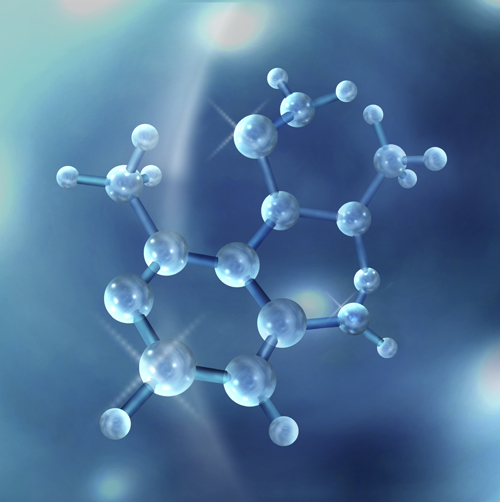 This site includes technical information, hints and tips for your decisions, and recommendation for selecting right chromatography accessories.
This site includes technical information, hints and tips for your decisions, and recommendation for selecting right chromatography accessories.
- Agilent GC inlet seal improvment
- Dynamic headspace
- GC column conditioning procedure
- GC column installation
- GC liners
- GC septa selection
- Glassware deactivation procedure
- How to improve GC capillary column connections
- How to increase signal/noise ratio in GC systems
- How to set optimum linear velocity
- How to handle chiral HPLC columns
- LC separation performance improvement
- LC column selection
- Syringe care
- Syringe tip selection
- Thermal desorption
Dosing pumps
Dosing pumps
Dosing pumps are used in many applications, in laboratories and within industry. Often we see the needs, when we require dose liquids under specific conditions:
- High pressure dosing (reaction chambers, aparatures)
- High temperatures dosing
- Injection of reactive substances
- Dosing of viscous media
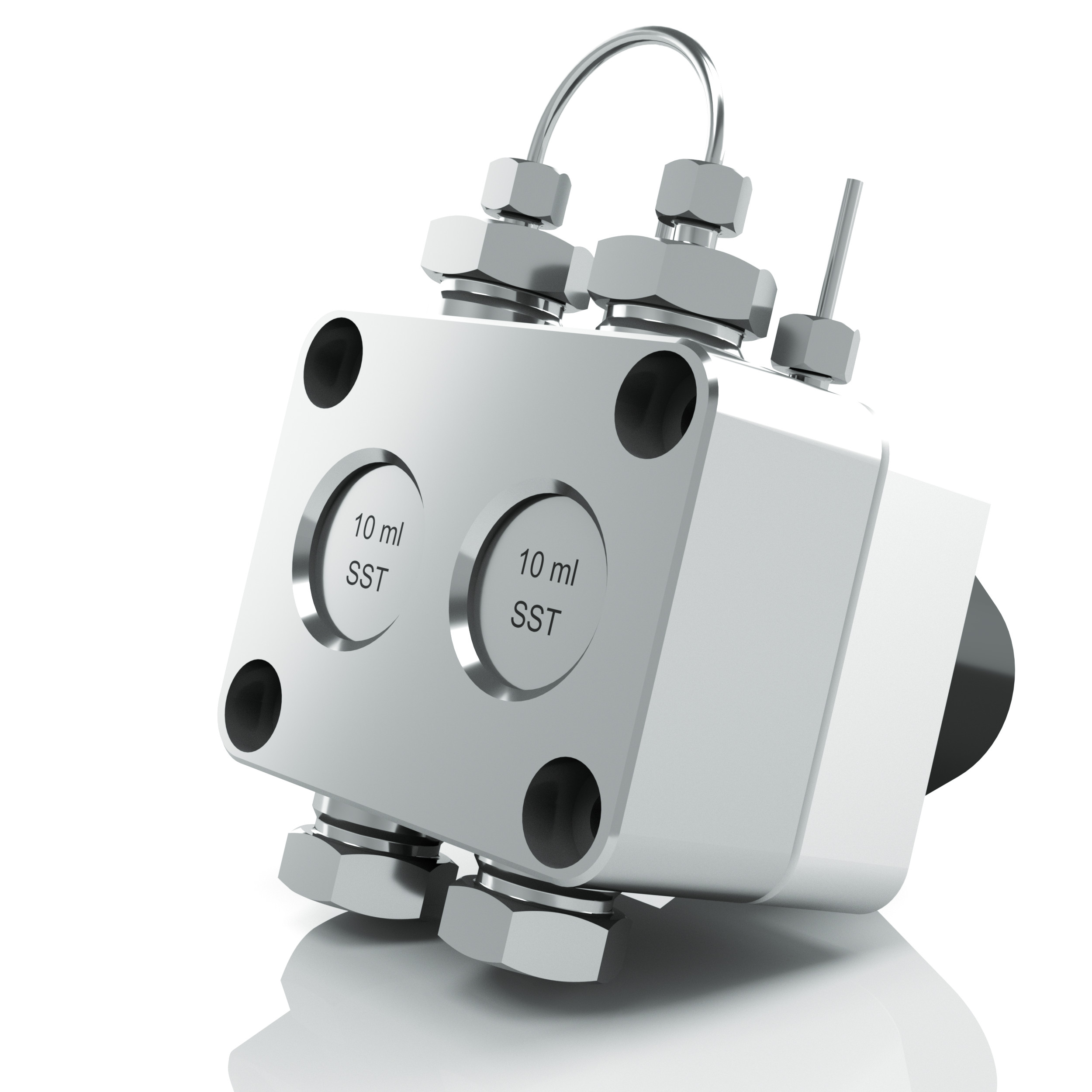 For all above mentioned applications it is possible to use technology that has been proven in the area of high performance liquid chromatography (HPLC). These are double-piston pumps AZURA (Knauer), which use sphire pistons enabling precise continuous dosing under high pressure. These pumps can work with flow of 0,01 to 1000 ml/min, under temperatures of -10°C to +120°C and with viscous media up to 1000 mPa.s.
For all above mentioned applications it is possible to use technology that has been proven in the area of high performance liquid chromatography (HPLC). These are double-piston pumps AZURA (Knauer), which use sphire pistons enabling precise continuous dosing under high pressure. These pumps can work with flow of 0,01 to 1000 ml/min, under temperatures of -10°C to +120°C and with viscous media up to 1000 mPa.s.
The pumps can be especially equipped so they can be used in specific application like hazardous areas.
Nice example of use of AZURA pumps is dosing of sulphur trioxide in production of methanesulfonic acid (MSA).
Materials
Pump head are available in following materials:
- Ceramic
- Hastelloy C-276
- Stainless steel
- Titanum
- Stainless steel/Titanum
Further information about models are available here.
TOF vs. quadrupole
In this article, we will show you why GC/MS-TOF is a more suitable technique for modern GC/MS analyzes than the decades-old quadrupole analyzer technology.
1) Why does TOF provide better quality data?
The higher speed of the Time of Flight GC/MS system means a higher number of spectra per chromatographic peak. The analyst therefore has more data at his disposal and, thanks to the unique deconvolution algorithm, can identify compounds that have similar properties (isomers, etc.), when resolution by mass spectrum at the unit level is not enough for us.
TOF can work with MS spectrum analysis in the entire m/z range – thanks to good sensitivity, there is no need to use SIM mode and thus the analyst does not lose qualitative information about the structure of the compound. This can play a big role in inter-laboratory control or in cases where there are different results between laboratories.
2) Higher sensitivity
Time off Flight is not a scanning analyzer, but a pulse analyzer. Thanks to the high ejection rate of 30kHz, it enables the collection of spectra up to 1000/s, which a quadrupole analyzer cannot achieve. In addition, the quadrupole must return to the original value of the electric field after one scan, which takes additional time, the so-called "Interscan time". This significantly increases the average time of one scan. E.g. if PBDE analysis is performed in the range of 100-1000 amu, a GC/MS system with a scanning speed of 20000 amu/s, we will achieve a data collection rate of <20 spectra/s. With the TOF analyzer, we can easily achieve 200 spectra/s, i.e. 10x more. Higher speed enables not only Fast GC/MS, but better quality data. Fast GC/MS provides higher peaks, thus a better signal-to-noise ratio. In addition, in the analysis of compounds such as PBDE, it is necessary to analyze the entire mass spectra, and in the quadrupole analyzer, we thus lose a lot of sensitivity in EI.
3) Economy of operation
When using GC/MS-TOF, we achieve a high speed of collecting spectra, so we can shorten the analysis by 3x to 4x when using a suitable column (0.10 or 0.18 mm ID). This will significantly save on device operating time, carrier gas consumption and increase sample throughput. This can not only increase the capacity of the laboratory, but also speed up the delivery of analysis results.
Thermo Fisher TriPlus GC AS syringes with fixed needles
| Volume [µl] | Needle length [mm] | Gauge | Needle ID [mm] | Tip | Gastight |
|---|---|---|---|---|---|
| 5 | 50 | 23 | 0.11 | Cone | × |
| 10 | 80 | 23 | 0.11 | Cone | × |
| 10 | 80 | 26 | 0.11 | Cone | × |
| 10 | 50 | 25 | 0.125 | Cone | × |
| 10 | 80 | 22 | 0.175 | Cone | × |
| 10 | 50 | 23 | 0.11 | Cone | yes |
| 10 | 50 | 23 | 0.11 | Cone | × |
| 10 | 50 | 26 | 0.11 | Cone | × |
Shimadzu GC AS syringes with removable needles
| Volume [µl] | Needle length [mm] | Gauge | Needle ID [mm] | Tip | Gastight |
|---|---|---|---|---|---|
| 0.5 | 42 | 26 | 0.1 | Cone | × |
| 0.5 | 42 | 23 | 0.1 | Cone | × |
| 10 | 42 | 26 | 0.11 | Cone | × |
| 10 | 42 | 23 | 0.11 | Cone | × |
| 10 | 42 | 23 | 0.11 | Cone | yes |
Shimadzu GC AS syringes with fixed needles
| Volume [µl] | Needle length [mm] | Gauge | Needle ID [mm] | Tip | Gastight |
|---|---|---|---|---|---|
| 5 | 42 | 26 | 0.11 | Cone | × |
| 5 | 42 | 23 | 0.11 | Cone | × |
| 50 | 42 | 23 | 0.24 | Cone | × |
| 250 | 42 | 23 | 0.24 | Cone | yes |
Official methods using immunoafinity columns
List of the Official methods using that can be used with VICAM immunoaffinity columns
| Official Method | Mycotoxin | Date of Issue | Method |
|---|---|---|---|
| EN - 12955 | Aflatoxin | July 1999 | Foodstuffs - Determination of aflatoxin B1, and the sum of aflatoxins B1, B2, G1 and G2 in cereals, shell-fruits and derived products - High performance liquid chromatographic method with post column derivatization and immunoaffinity column clean up |
| EN - 14123 | Aflatoxin | January 2008 | Foodstuffs - Determination of aflatoxin B1, and the sum of aflatoxins B1, B2, G1 and G2 in hazelnuts, peanuts, pistachios, figs, and paprika powder - High performance liquid chromatographic method with post column derivatization and immunoaffinity column clean up |
| EN - 14132 | Ochratoxin A | 2009 | Foodstuffs - Determination of ochratoxin A in barley and roasted coffee - HPLC method with immunoaffinity column clean-up |
| EN - 14133 | Ochratoxin A | July 2003 | Foodstuffs - Determination of ochratoxin A in wine and beer - HPLC method with immunoaffinity column clean-up |
| EN - 14352 | Fumonisin | July 2004 | Foodstuffs - Determination of fumonisin B1 and B2 in maize based foods - HPLC method with immunoaffinity column clean-up |
| EN ISO 14501 | Aflatoxin | 2007 | Milk and milk powder - Determination of aflatoxin M1 content - Clean-up by immunoaffinity chromatography and determination by high-performance liquid chromatography |
| EN - 15829 | Ochratoxin A | 2010 | Foodstuffs - Determination of ochratoxin A in currants, raisins, sultanas, mixed dried fruit and dried figs. HPLC method with immunoaffinity column cleanup and fluorescence detection |
| EN - 15835 | Ochratoxin A | 2010 | Foodstuffs - Determination of ochratoxin A in cereal based foods for infant and young children. HPLC method with immunoaffinity column cleanup and fluorescence detection |





 0
0
 0
0
